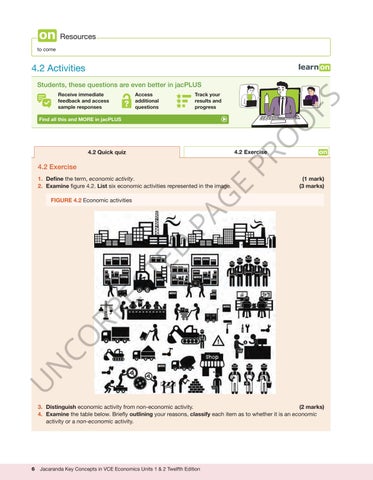“c04EconomicActivity_PrintPDF” — 2022/5/28 — 13:00 — page 6 — #6
Resources
Resourceseses to come
4.2 Activities Students, these questions are even better in jacPLUS Access additional questions
Track your results and progress
FS
Receive immediate feedback and access sample responses
O
O
Find all this and MORE in jacPLUS
4.2 Exercise
PR
4.2 Quick quiz
4.2 Exercise
(1 mark) (3 marks)
G
E
1. Define the term, economic activity. 2. Examine figure 4.2. List six economic activities represented in the image.
U
N
CO RR EC
TE
D
PA
FIGURE 4.2 Economic activities
3. Distinguish economic activity from non-economic activity. (2 marks) 4. Examine the table below. Briefly outlining your reasons, classify each item as to whether it is an economic activity or a non-economic activity.
6
Jacaranda Key Concepts in VCE Economics Units 1 & 2 Twelfth Edition





















































